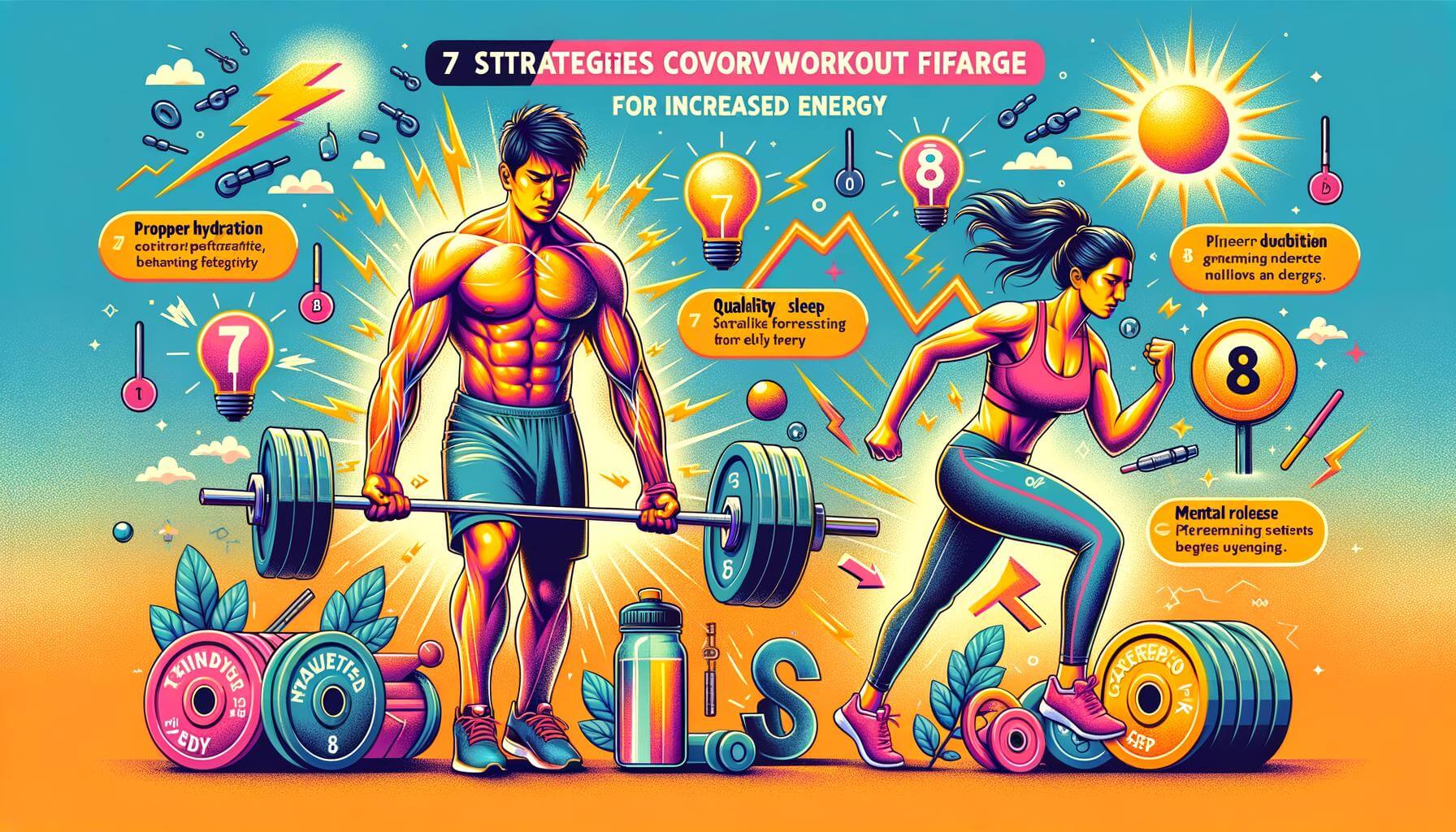
Building a Fitness Plan for Sustainable Energy
When it comes to building a fitness plan, it’s essential to consider sustainable energy. In today’s fast-paced world, many people struggle with low energy levels and fatigue. A well-rounded fitness plan can help improve your energy levels, leaving you feeling more vibrant and alive. In this article, we will discuss the key components of a fitness plan for sustainable energy and provide tips to help you get started on your journey to better health and wellness.
Understanding Sustainable Energy
Before diving into building a fitness plan, it’s crucial to understand what sustainable energy means. Sustainable energy refers to the ability to maintain high energy levels throughout the day without experiencing crashes or fatigue. This type of energy is stable, consistent, and allows you to tackle your daily tasks with ease.
A fitness plan designed for sustainable energy focuses on improving overall health and wellness, rather than just physical appearance. It includes a combination of cardiovascular exercise, strength training, flexibility work, and proper nutrition to create a well-rounded approach to fitness.
Key Components of a Fitness Plan for Sustainable Energy
1. Cardiovascular Exercise
Cardiovascular exercise, such as running, swimming, or cycling, is an essential component of a fitness plan for sustainable energy. It helps improve heart health, increase endurance, and boost overall energy levels. Aim for at least 150 minutes of moderate-intensity cardio each week to reap the benefits of sustained energy.
2. Strength Training
Incorporating strength training into your fitness plan is crucial for building sustainable energy. Lifting weights or performing bodyweight exercises helps build muscle mass, improve metabolism, and increase overall strength. As a result, you’ll experience enhanced energy levels and greater stamina to power through your day.
3. Flexibility Work
Don’t overlook the importance of flexibility work in your fitness plan. Stretching, yoga, or Pilates can help improve joint mobility, reduce muscle tension, and enhance overall relaxation. By incorporating flexibility exercises, you’ll reduce the risk of injury and boost your energy levels by promoting better circulation and relaxation.
4. Proper Nutrition
No fitness plan is complete without considering proper nutrition. Fueling your body with nutrient-dense foods, such as lean proteins, complex carbohydrates, healthy fats, and a variety of fruits and vegetables, is essential for sustainable energy. Avoiding processed foods, excessive sugar, and alcohol can help stabilize energy levels and prevent crashes throughout the day.
5. Rest and Recovery
Lastly, don’t underestimate the power of rest and recovery in your fitness plan. Adequate sleep, stress management, and relaxation techniques play a crucial role in sustaining energy levels. Aim for 7-9 hours of quality sleep each night, practice mindfulness or meditation, and allow your body to recover from intense workouts to ensure optimal energy levels.
Tips for Building a Fitness Plan for Sustainable Energy
Now that you understand the key components of a fitness plan for sustainable energy, here are some tips to help you get started:
Set Realistic Goals: Establish achievable fitness goals that align with your lifestyle and preferences. This will help you stay motivated and committed to your fitness plan.
Create a Balanced Workout Routine: Incorporate a mix of cardiovascular exercise, strength training, and flexibility work into your weekly workout routine to address all aspects of fitness.
Prioritize Nutrition: Focus on consuming whole, unprocessed foods that provide the necessary nutrients to support sustainable energy levels. Stay hydrated and consider working with a nutritionist for personalized guidance.
Listen to Your Body: Pay attention to your body’s signals and adjust your fitness plan as needed. If you feel fatigued, consider incorporating more rest days or engaging in low-intensity activities.
Seek Professional Guidance: If you’re new to fitness or unsure where to start, consider working with a personal trainer or fitness coach who can tailor a sustainable energy-focused plan to your individual needs.
By implementing these tips and key components into your fitness plan, you’ll be well on your way to building sustainable energy and achieving optimal health and wellness.
SuperBody Fitness App: A Tool for Success
If you’re looking for a convenient way to track your progress in the gym, access a comprehensive library of exercises, and follow structured workout plans, consider using the SuperBody Fitness App. Available on the App Store, SuperBody offers a user-friendly interface, customizable workout routines, and the ability to monitor your fitness journey with ease.
With SuperBody, you can create a fitness plan tailored to sustainable energy, track your energy levels, and stay motivated to achieve your health and wellness goals. Whether you’re a beginner or a seasoned fitness enthusiast, this app can serve as a valuable tool for building a sustainable energy-focused fitness plan.
In conclusion, building a fitness plan for sustainable energy requires a holistic approach that encompasses cardiovascular exercise, strength training, flexibility work, proper nutrition, and rest and recovery. By prioritizing these key components and following the provided tips, you can enhance your energy levels, improve your overall health, and experience sustained vitality throughout your daily activities.
Remember, sustainable energy is achievable with a well-designed fitness plan and a commitment to prioritizing your health and wellness. Start your journey to sustainable energy today and embrace the transformative power of a balanced, comprehensive fitness plan.
